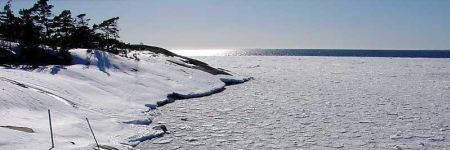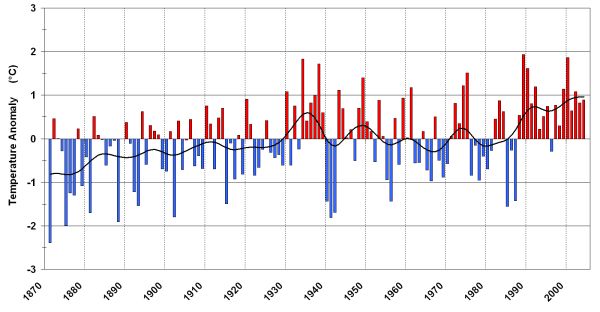| Research objectives > Climate variability and change

Climate change is a reality, and BALTEX scientists try to find out what the effects are and will be in the Baltic Sea basin. Scientists use their data and knowledge about the processes to “feed” sophisticated computer models which then in turn can produce “scenarios” of the possible future climate in the Baltic Sea basin, with all related consequences, ranging from different temperatures and precipitation patterns to shifted vegetation periods and zones and other potential impacts on the life conditions of the Baltic Sea and its drainage area.
Throughout the Earth´s history, climate has never been constant. However, when we talk about climate change today, we mostly refer to the change induced by human activities though the emission of greenhouse gases into the atmosphere. On historical time scales, climate shows considerable variations, and the challenge is to separate this natural variability from human-induced climate change.
The look back in time
A reconstruction of past climate conditions can be done by analyzing measured data. In the Baltic Sea catchment basin, reliable measurements of temperature, precipitation and other relevant climate indicators like ice cover duration and thickness or ice break-up dates go back to 18th century. For earlier periods, scientists must rely on indirect indicators, so called 'proxy' data like tree rings, fossil pollen or indicators in sea or lake sediments. These data are used to test climate models by comparing the measured data with the simulations of past climate. If the models can sufficiently simulate the past, they can be used for future projections.
One focus of BALTEX research is the reconstruction of climate of the past 200 years, which will give important clues on natural climate variability and the factors which determine this variability and also extreme events like storms, floods and droughts. A more detailed reconstruction of the past 40 years in the Baltic Sea basin takes advantage of the modern observation techniques and high measurement frequencies, and can be compared to global 40 year reanalyses.
The look ahead - Regional climate scenarios
Regional climate models for the Baltic Sea drainage basin are constantly being enhanced. Regional models have much higher resolutions that global climate models, which means they are able to simulate climate in more detail. Still, the regional models must be embedded in the global ones. In order to arrive at a sufficient plausibility, many combinations of different regional and global models are used. If all model runs show a similar picture, it can be considered plausible. Plausible scenarios for the Baltic Sea basin could be elaborated for air temperature, precipitation, and snow depth reduction, but not for wind.
BALTEX Assessment of climate change for the Baltic Sea basin (BACC)
A major achievement of regional climate research in the Baltic Sea drainage basin is the BACC assessment book. The book gives a comprehensive overview over published knowledge on past climate change, presents the best available scenarios of future climate change, and also gives information on the impact of climate change on terrestrial, freshwater and marine ecosystems of the region. 84 scientists from 13 countries have contributed to this large review book.
Link to publisher
Air temperatures over the Baltic Sea basin have increased
 |
| This figure shows the development of bottom-near air temperature over the Baltic Sea basin 1871 - 2004. Shown are not the absolute temperatures but the deviations from the mean value of the generally used reference period ("Climate Normal Period") 1961-1990. This should not imply that this period was more "normal" than any other periods, but it was chosen as reference value against which changes can be detected. We can see that air temperatures show a high variability, but also a trend towards a warming since the second half of the 19th century. This trend was interrupted by a period of cooling from 1940 to 1980, and since then, temperatures continue to increase (from BACC 2008, redrawn). |
|

